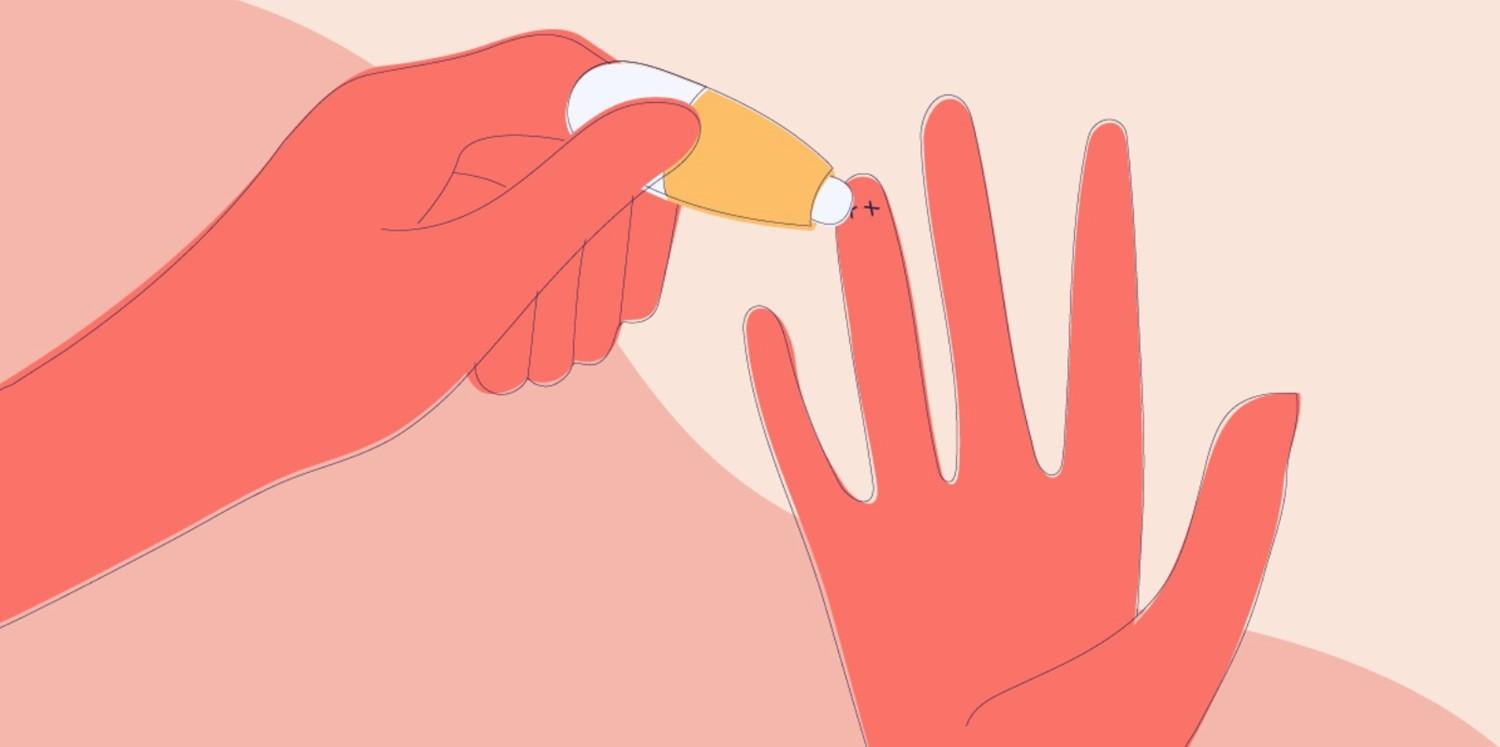
Home STI tests: how they work and what to expect
Peer reviewed by Dr Krishna Vakharia, MRCGPLast updated by Amberley DavisLast updated 15 Jun 2023
- HerunterladenHerunterladen
- Teilen Sie
Teilen Sie
Sexually transmitted infections (STI) diagnoses reached record levels in 2022 in the UK. So it's never been more important to get tested - and home STI tests are a simple, quick, and accurate way look after your health. Here's what you need to know about home STI tests, their reliability, and how easy they are to use.
In diesem Artikel:
Lesen Sie unten weiter
How often should I get STI tested?
Sexual contact between two people can sometimes result in the spread of infections. These are known as sexually transmitted infections, or STIs, and getting an early diagnosis can be the difference between full recovery and serious, long-term health issues.
There are many types of STIs, including chlamydia, gonorrhoea, HIV (human immunodeficiency virus), and syphilis. These are usually spread through vaginal, anal and oral sex.
Record levels of gonorrhoea and syphilis
Data published in June 2023 revealed that UK diagnoses of gonorrhoea and syphilis in 2022 reached the highest numbers in decades1.
82,592 gonorrhoea diagnoses - an increase of 50.3% from 2021 and the highest annual number since records began in 1918.
8,692 infectious syphilis diagnoses - an increase of 15.2% from 2021 and the highest annual number since 1948.
Young people aged 15 to 24 years were the most likely to get diagnosed with an STI. In light of these findings, the UK Health Security Agency (UKHSA) is urging everyone having sex with new or casual partners to get tested regularly and use a condom - even if you don't have symptoms.
Here are some key times to get yourself tested:
If you have a symptom that you think is due to an STI - but remember many STIs can be symptomless.
After a high-risk encounter - such as unprotected sex with a new sexual partner, or with someone you don't know is STI-free. Remember, condoms protect against STIs as well as pregnancy.
Ideally, it's best to get tested before you have sex with someone for the first time.
If you regularly have sex with different people, then healthcare experts recommend getting tested once every one to three months.
Can you get an STI test at home?
You can be tested for STIs at your local sexual health clinic - a GUM (genitourinary medicine) clinic specialises in this. However, you may feel more comfortable ordering a home STI test.
Benefits of home testing include:
The comfort and convenience of testing in your own home.
Privacy and by-passing difficult conversations - some people may prefer not to discuss this directly with a professional.
Lesen Sie unten weiter
Are STI home tests accurate?
The National Institute for Health and Care Research (NIHR) has analysed a range of studies and concluded that taking a home STI test or having one carried out by a clinician should make no difference to the accuracy of your results2.
No STI test is 100% reliable, whether completed by yourself or a healthcare professional. Most tests are considered clinically reliable if they have a 90% accuracy rating2.
Here are some tips for improving the reliability of your home STI test:
Test after your incubation period - this refers to the time period that you can have an STI before your body produces virus-fighting antibodies, and it's these that indicate a positive test result. The incubation period depends on the type of STI you have.
Speak to a sexual health expert if you're unsure which STIs to test for based on your symptoms and/or your sexual history, and for the relevant incubation period.
Follow your home STI test kit instructions carefully.
Where can I get a home STI test?
STI testing kits are now widely available to order from online sexual health services - in the UK high street pharmacies like Superdrug and Boots offer a wide range of test kits. These include tests for specific STIs, such as HIV tests, or package kits that test for the most common STIs in one go.
Gesponsert
You may be able to obtain a free NHS home STI test kit - criteria and availability will depend on your local NHS district. Likewise, sexual health charities such as Brook provide some free kits. Again, you'll need to check which ones are available in your local area.
Patienten wählen aus für Sexuell übertragbare Infektionen

Sexuelle Gesundheit
What to do if you think you have an STI
Christmas is a time for giving, but some of the presents we receive are not always ones we want. I'm not talking about that pair of socks that continues to play 'Silent Night' long after you've gone to bed, or the jumper that appears to give you sparkly dandruff. No, I'm talking about sexually transmitted infections (STIs), the gifts that keep on giving.
von Dr. Laurence Knott

Sexuelle Gesundheit
Mycoplasma genitalium
Mycoplasma genitalium (auch Mgen genannt und manchmal als M. genitalium bezeichnet) ist eine sexuell übertragbare Infektion, die durch einen Keim (Bakterium) verursacht wird. Die Übertragung von Mycoplasma genitalium kann beim Sex mit einer Person erfolgen, die bereits infiziert ist. Mycoplasma genitalium kommt häufiger bei jungen Menschen und bei Personen vor, die beim Sex keine Kondome benutzen. Die Infektion verläuft häufig asymptomatisch, kann aber unbehandelt zu schweren gesundheitlichen Problemen führen. Es besteht die Befürchtung, dass Mgen das Potenzial hat, sich zu einem "Superbug" zu entwickeln, d. h. zu einem Bakterium, das gegen die verfügbaren Antibiotikabehandlungen resistent ist.
von Dr. Philippa Vincent, MRCGP
Lesen Sie unten weiter
How to do an STI test at home
Although the exact steps can vary slightly between the type of STI you're testing for and the testing service you use, a home STI test is typically convenient, easy, and quick.
Usual steps
Order your home STI test kit online.
Receive your kit in the post or choose to pick up from a local collection point.
Take your samples - finger prick, swab, urine sample, or combination (see Types of STI samples following).
Post your samples to the laboratory for analysis - a freepost envelope for Royal Mail or private courier should be provided.
Get your test results - depending on the company, this could be by text, email, or another preferred method.
If your test results indicate you have an STI, book in for treatment - some sexual health services automatically send your results to your GP.
Types of STI samples
The kind of sample you need to collect will depend on what you're being tested for:
Finger prick blood sample home STI test - checks for HIV and syphilis.
Urine sample home STI test - checks for chlamydia and gonorrhoea.
Swab home STI test - either involves rubbing a cotton bud in the vaginal region (females only), rectal region (males only), or throat. This also tests for chlamydia and gonorrhoea.
If you're testing for multiple STIs in one test kit, you'll be instructed to carry out a combination of the above. All sample types are relatively straight-forward and quick to complete - your test provider will send clear step-by-step instructions.
How long before an STI shows up on a test?
Some STIs can take anywhere between a few weeks or months to show a positive test result. Speak to a healthcare professional if you're unsure when to test to avoid the incubation period.
Once you've decided when to take your home STI test, it usually only takes 2-5 working days to arrive, and a matter of minutes or even seconds to complete. The time it takes for you to receive your test results depends on the company you choose. Some are relayed as early as one working day after the lab receives, but anywhere between 5-10 working days3is normal.
Weitere Lektüre
Artikel Geschichte
Die Informationen auf dieser Seite wurden von qualifizierten Klinikern geprüft.
15 Jun 2023 | Neueste Version
25 Oct 2022 | Originally published
Verfasst von:
Amberley Davis

Fragen, teilen, verbinden.
Stöbern Sie in Diskussionen, stellen Sie Fragen, und tauschen Sie Erfahrungen zu Hunderten von Gesundheitsthemen aus.

Fühlen Sie sich unwohl?
Beurteilen Sie Ihre Symptome online und kostenlos
